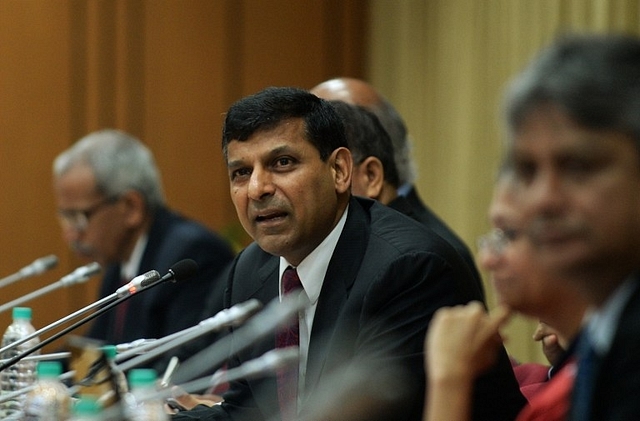
Rating Raghuram Rajan
Prudent central banking has always been about risk management. Fiscal policy is usually under politicians who demonstrate the propensity to cave in to popular pressure and run fiscally unviable policies. However in most economies, monetary policy run usually by technocrats is designed to offer an effective and much needed antidote. In this context, the recent criticism of RBI governor Rajan of being ‘conservative’ and ‘obstructing the recovery’ is harsh and does not pass the smell test. For starters, RBI has delivered significant monetary policy easing in a short period of time in 2015, and has been cutting rates at a time when growth has been improving, and not declining. While India’s fiscal policy has mostly been pro-cyclical, the RBI, through its easing cycle, is aiding, not abetting the economic recovery. This is being done while the credibility of policy is maintained, and that largely boils down to RBI’s policy management under the current governor.
In Raghuram Rajan, India has one of the most well respected economists and a global thought leader as its central bank governor. During his term, which began in August 2013, he has successfully stabilized the rupee, raised foreign reserves by almost $75bn, and added considerable amount of credibility by adopting a clear policy objective in inflation management. While the merits of a flexible inflation targeting regime can be debated, we cannot deny that inflation, not growth, is India’s most pressing structural issue. To emphasize his policy credentials, it is worth noting that governor Rajan delivered hiked rates when economic growth was weak (in 2014), and is now cutting rates when the economy is on the mend (in 2015). This largely shows that under the new leadership, inflation, rather than growth drives monetary policy.
The focus on inflation is not new. Governor Rajan’s position since taking over as RBI governor has been consistent on this issue of tackling inflation. During the fiscally irresponsible years of UPA-2, inflationary pressures got entrenched in India; taking both realized and expected inflation into double digits. For a country with per capita GDP income of less than $2000 and savings rate of close to 30%, high and persistent inflation eroded the value of these small savings, pushing consumers either towards physical assets or consumption. While the new government has taken steps to improve its inflation management and has largely run a tight fiscal policy in its first year, India still needs monetary policy to steer inflation expectations lower. In recent years, the decline in savings rate has hurt both investment spending and the external balances. The fall in financial savings is particularly stark, and this can predominantly be corrected by use of prudent monetary tools.
It is here that governor Rajan’s basic premise of a positive real rate (nominal policy rate – inflation) between 1.5-2.0% is necessary and the right medicine for savers. In order to encourage financial savings to return to the banking system, without fears of erosion of value through negative real rates or a depreciating currency, a decent real rate of return is required. India’s financial savings fell to 7% of GDP in 2014 from its peak of 11% in 2008, and this hurt the banking sector and corporate credit demand much more than what a 50 basis points (bps} of higher rates can do. Lack of cheap and reliable current and savings account (CASA) funding and rising nonperforming assets (NPAs) in banking sector have been unable to fund a new capital investment cycle. Hence, for banks to attract regular/new customers to save money in financial assets, a decent real rate of return needs to be promised in order to finance the expected improvement in credit growth.
Even in the previous 12 months, governor Rajan’s monetary policy management has been nothing short of exemplary. RBI under him chose not to let INR get significantly overvalued during initial euphoria post the general elections. As a result, INR has been one of the better behaved EM currencies, despite bouts of volatility. While global commodity prices fell late last year, the transmission of it in India was rather slow. The government ‘fiscalized’ most of the oil related gains through subsidy cuts and excise duty hikes, and RBI made the right call by waiting to see some transmission into India’s inflation, particularly inflation expectations, before embarking on a monetary easing cycle. Since January 2015, RBI has cut rates thrice, delivering a cumulative 75 bps of easing, which is more than what most developing market central banks have done in the similar period.
This easing has also come amid much improved fiscal position and when India’s GDP growth is the fastest among major economies, as per the new GDP estimates. Hence with economy forecasted to grow close to 8% in FY15-16, it is prudent for governor Rajan to slow down the future pace of rate cuts. Plus the clarity on the visualized disinflation path has still not materialized. An erratic monsoon, volatile commodity prices, and a recovering economy have all put pressure on RBI to hold off the rate cutting cycle, not accelerate it.
The message from RBI and governor Rajan is very clear in the latest policy statement, that we remain on a path of gradual monetary policy easing, but inflation is still our biggest structural economic challenge, and will largely determine the path of monetary policy in the coming quarters. Still, more rate cuts are likely in the future. But with the government adopting a fiscally expansionary stance, and inflation still likely to hover close to 6% mark by early 2016, it is better that RBI takes its monetary policy easing cycle slow, rather than accelerate the pace of cuts.
After all, the job of a central bank is to manage risks, and not play to the galleries.